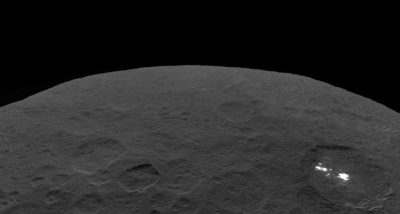Ceres’ Crust Kept Cryomagma Liquid for Millions of Years, Researchers Say
February 14, 2019

Forged billions of years ago from rock and ice and far enough from the influence of other planets, planetary scientists had thought that Ceres’ days of active geology had come to close.
But NASA’s Dawn mission changed that view when the orbiter sent back pictures of bright spots at the bottom of impact craters. The spots turned out to be the remnants of cryomagma.
The location of the spots at or near the center of crater basins suggests that the heat and energy generated by asteroid impacts could jumpstart geology on Ceres, creating reservoirs of cryomagma that were then brought to the surface by conduits such as fractures.
In the new study, Dr. Marc Hesse from the University of Texas at Austin and Dr. Julie Castillo-Rogez of NASA’s Jet Propulsion Laboratory looked specifically at the deposits on the floor of the 90-mile (145 km) wide Occator Crater, which was formed about 20 million years ago.
Sci News Feb.13, 2019
Space.com Feb.14, 2019
Featuring: Marc Hesse, Associate professor, Department of Geological Sciences, Jackson School of Geosciences
